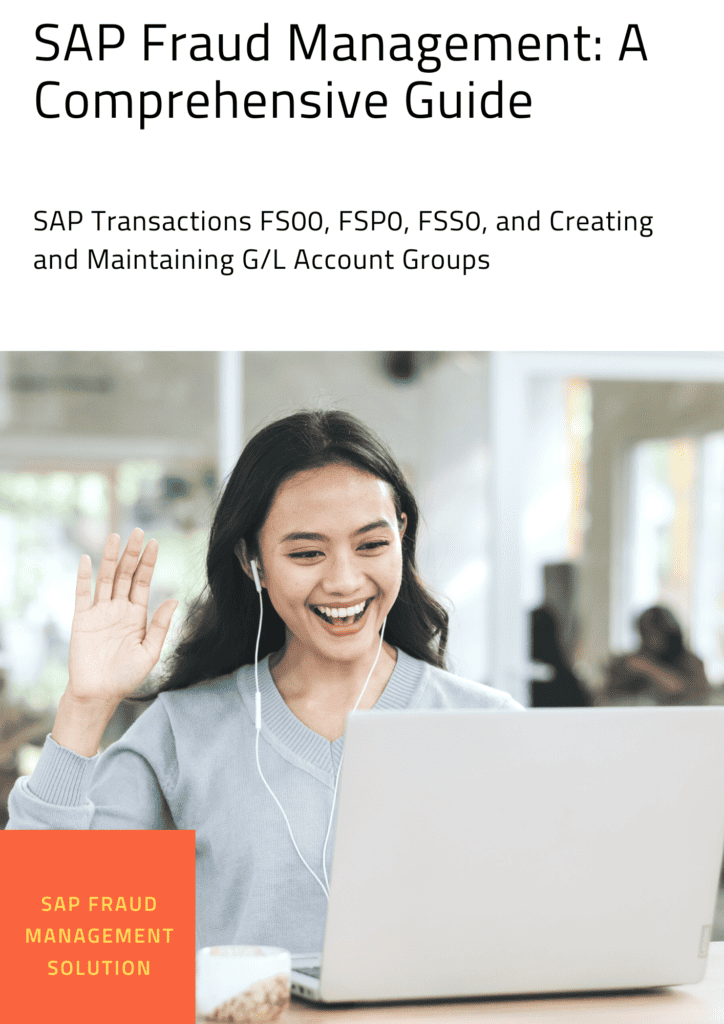Are you looking for effective ways to manage fraud in your SAP transactions? Look no further! In this comprehensive guide, we will explore SAP Fraud Management and delve into the functionalities of key SAP transactions, namely FS00, FSP0, and FSS0. We will also provide valuable insights on creating and maintaining G/L account groups within SAP. By the end of this article, you’ll have a solid understanding of SAP Fraud Management and be equipped with the knowledge to optimize your G/L account groups effectively.

Introduction to SAP Fraud Management
SAP Fraud Management is a robust solution designed to identify, prevent, and mitigate fraudulent activities within SAP systems. With the ever-increasing complexity of financial transactions, it has become essential for organizations to have comprehensive fraud management tools in place. SAP Fraud Management provides real-time monitoring, advanced analytics, and detection techniques to help businesses proactively detect and prevent fraudulent activities.
Understanding SAP Transactions FS00, FSP0, and FSS0
FS00: Maintain/Display G/L Account Master Data
The FS00 transaction in SAP allows you to create, modify, and display G/L account master data. G/L accounts are crucial components of financial accounting and provide a detailed overview of financial transactions. When creating G/L accounts, it is important to define the account group to ensure proper classification and reporting. By maintaining G/L account master data using FS00, you can establish the foundation for effective fraud management and financial control.
FSP0: Maintain G/L Account Groups
In SAP, G/L account groups play a vital role in organizing and categorizing G/L accounts. The FSP0 transaction enables you to create and maintain G/L account groups based on your organization’s specific requirements. By grouping similar G/L accounts together, you can streamline financial reporting, facilitate analysis, and enhance fraud detection capabilities. Properly structured G/L account groups contribute to an efficient financial management system.
FSS0: G/L Account Changes
The FSS0 transaction allows you to track and review changes made to G/L account master data. By monitoring and analyzing G/L account changes, you can detect unauthorized modifications or potentially fraudulent activities. The FSS0 transaction provides an audit trail that helps in maintaining data integrity and strengthening internal controls. Regularly reviewing G/L account changes is a crucial step in fraud prevention.

Creating and Maintaining G/L Account Groups in SAP
Creating and maintaining G/L account groups in SAP is essential for effective financial management and fraud prevention. Follow these steps to establish and optimize your G/L account groups:
- Evaluate Organizational Structure: Understand your organization’s reporting and analysis requirements. Identify common characteristics, such as business areas, cost centers, or profit centers, to determine the grouping criteria for G/L accounts.
- Define G/L Account Groups: Using the FSP0 transaction, create G/L account groups based on the grouping criteria identified in the previous step. Assign appropriate names and descriptions to ensure clarity and ease of understanding.
- Assign G/L Accounts: Once G/L account groups are created, assign relevant G/L accounts to their respective groups. This process ensures proper classification and accurate financial reporting.
- Regularly Review and Adjust: Periodically review your G/L account groups to ensure they align with your organization’s evolving requirements. Make adjustments as necessary to accommodate changes in business operations or reporting needs.
By following these steps, you can optimize your G/L account groups and improve fraud detection capabilities within your SAP system.
Enhancing Fraud Management with SAP Fraud Management
To further strengthen your fraud management practices, consider leveraging SAP Fraud Management alongside your optimized G/L account groups. SAP Fraud Management offers several features that enhance fraud detection and prevention:
- Real-time Monitoring: SAP Fraud Management continuously monitors financial transactions, flagging potential fraudulent activities in real-time. It utilizes advanced analytics and machine learning algorithms to detect anomalies and patterns indicative of fraud.
- Alerts and Notifications: The system triggers alerts and notifications whenever suspicious activities are detected, enabling quick investigation and response. By promptly addressing potential fraud cases, you can minimize financial losses and reputational damage.
- Case Management: SAP Fraud Management provides a centralized platform for managing fraud cases. It facilitates collaboration among stakeholders, streamlines investigation processes, and ensures proper documentation for regulatory compliance.
Conclusion
SAP Fraud Management offers a comprehensive solution to combat fraud within SAP systems. By understanding the functionalities of key SAP transactions like FS00, FSP0, and FSS0, and optimizing your G/L account groups, you can significantly enhance your fraud management capabilities. Remember to regularly review and adjust your G/L account groups to align them with your organization’s evolving needs. By combining SAP Fraud Management and optimized G/L account groups, you can proactively detect and prevent fraud, safeguarding your organization’s financial integrity.
If you’re interested in exploring more SAP-related topics, webtechtips.co.uk offers a wealth of information on tech, web development, and gaming. Visit their website for valuable insights and resources.
Don’t forget to share this comprehensive guide on SAP Fraud Management with your colleagues and peers. Together, we can build a stronger defense against fraud within SAP systems.
